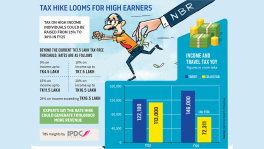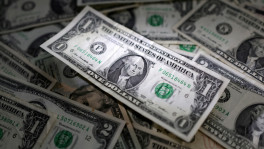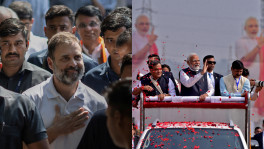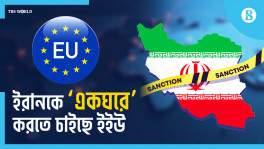Bangladesh tourism sector weakest in South Asia
The country stands 133rd among 140 countries in tourism service infrastructure index

Last October, a senior journalist from South India stopped for a short visit in Dhaka to report on the pre-election scenario in Bangladesh.
Stepping out of Hazrat Shahjalal International Airport, he immediately felt lost. He could neither read any of the road signs, nor could he ask anyone for instructions as he did not speak the local language. Everything was written in Bangla and not a single auto-rickshaw driver spoke English.
After travelling with ease in over 25 countries, he was finally defeated in Bangladesh.
This is not a one-off case though, as most foreign tourists visiting Bangladesh face many difficulties upon arrival in the capital.
Bangladesh Parjatan Corporation, the state-owned tourism agency that has been working for almost 50 years to transform this sector, has barely made a dent despite undertaking various projects.
The sorry state of our tourism sector was revealed – once again – in a recent report published by the World Economic Forum, titled "Travel and Tourism Competitiveness Report 2019."
Bangladesh ranked 133rd among 140 countries in tourism service infrastructure.
Among South Asian countries, Bangladesh secured the lowest position, while neighbours like Sri Lanka, India, Pakistan and Nepal secured 92nd, 109th, 112th and 126th positions respectively.
Previously in 2017, Bangladesh was in the same position, suggesting the tourism sector made no progress in the last two years, although several projects had been taken during the period to improve the sector.
Like every other year, Bangladesh is celebrating World Tourism Day today, but the bitter truth is that there is no clear plan about developing the sector, making lives difficult for both tourists and people depending on the sector for their livelihoods.
There is no specific data on how much the tourism sector contributes to the national economy and how many foreign tourists visit specific locations in a particular year.
Bhubon Chandra Biswas, chief executive officer of the Bangladesh Tourism Board, said they had no such data.
Moreover, due to a lack of focus and plan on building good hotels, developing skills and quality manpower, foreign tourists are having difficulties in travelling.
No specific system exists to keep tourist data and track income from the sector in Bangladesh. The Special Branch of Bangladesh Police keeps records of foreigners coming into the country – although partially, but that is not for tourism purposes. Bangladesh Bank keeps information about earnings from foreign tourists.
Annually about 5-6 lakh foreign tourists visit Bangladesh, while 90 lakh local tours are organised across the country.
Almost 11 lakh people directly depend on this sector for their livelihoods while another 12 lakh are associated with the sector indirectly.
Poor access to information and language barrier
Dr Sakia Haque, founder of the Travelettes of Bangladesh, said although Bangladesh has numerous attractive tourism spots, information on them is not readily available.
"Most of the information is written in Bangla and is scattered all over the internet," she said, adding that it is quite difficult for foreigners to sort through all this and find the required information.
Furthermore, information for travelling inside the country, for example from Dhaka to a certain location outside the capital, is available in popular yet Bangla-dominated blogs, Facebook groups and YouTube channels.
Dr Sakia suggested that the authorities add more travel information, preferably in English as well as other languages, to make trips easier for foreigners.
"Nobody is willing to develop our tourism sector except for the prime minister. We do not have any guidelines for tour operators and no registration process for them," said Syed Rashidul Hasan, former chairman of the Department of Tourism and Hospitality Management at the Dhaka University.
Money allocated for projects, but not spent
A project was undertaken by the Ministry of Civil Aviation and Tourism in July 2017 to build the Parjatan Bhaban at Agargaon in Dhaka at about Tk63 crore, but the Bangladesh Parjatan Corporation was unable to use the funds.
The project implementation time ended in June 2019 with zero progress of the work.
Most of the projects and initiatives undertaken to boost the tourism industry are also stagnant. The year-long programmes marking the "Tourism Year 2016" ended up with an approval of a Tk49.68 crore project which is currently stalled.
The project aimed at improving several tourism spots to raise the number of annual foreign tourists to 10 lakh from the current 5 lakh.
Sources at the Implementation Monitoring and Evaluation Division said the overall implementation status of development projects by the tourism ministry has worsened over the years.
The state-owned Prajatan Corporation provided a list of projects undertaken over the years to boost the tourism industry, but none of them have rendered any visible progress so far. These include development of tourism spots in Barishal, Netrokona, Munshiganj, Satkhira and Cox's Bazar.
"Due to poor roads and infrastructure, we cannot offer quality facilities to foreign tourists. To boost up the sector, both local and international investment is a must," said Md Ziaul Haque Howlader, manager of the Bangladesh Parjatan Corporation.
At present, the tourism corporation has only 29 hotels and motels across the country, very few compared to the number of tourism spots. These hotels have capacity for 1,560 tourists while the corporation's restaurants can seat 1,992 people.


 Keep updated, follow The Business Standard's Google news channel
Keep updated, follow The Business Standard's Google news channel
















